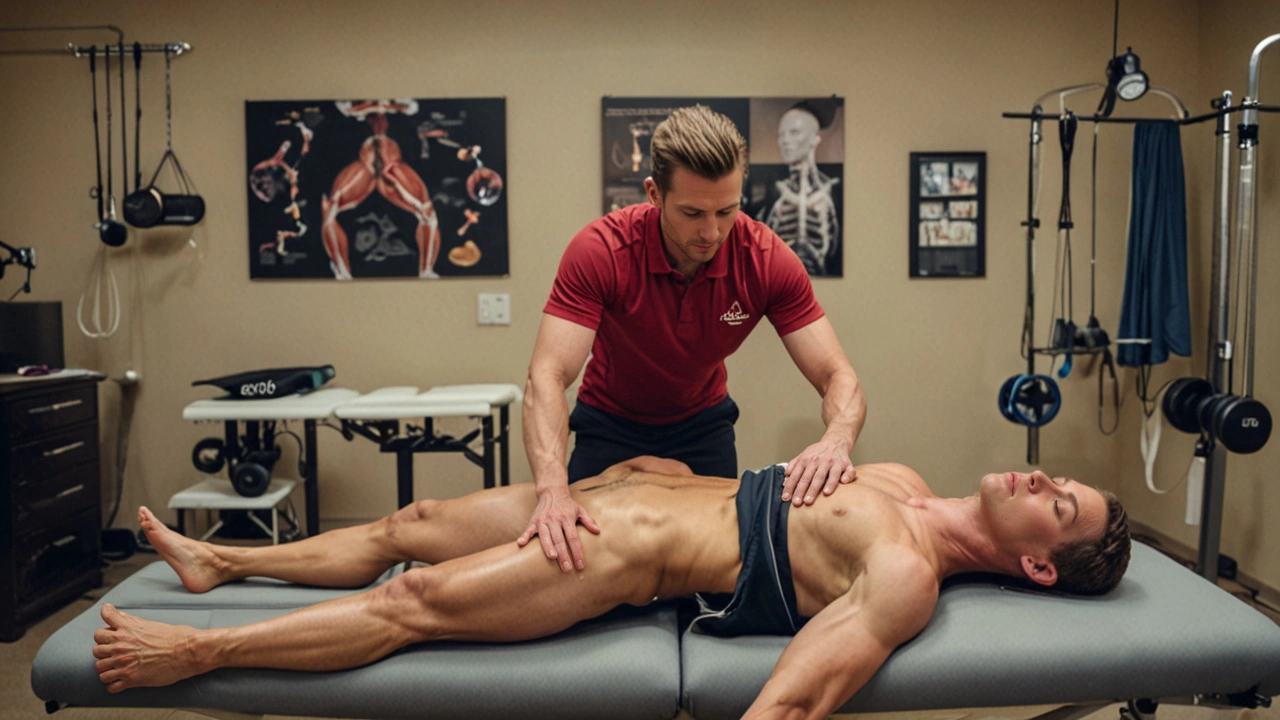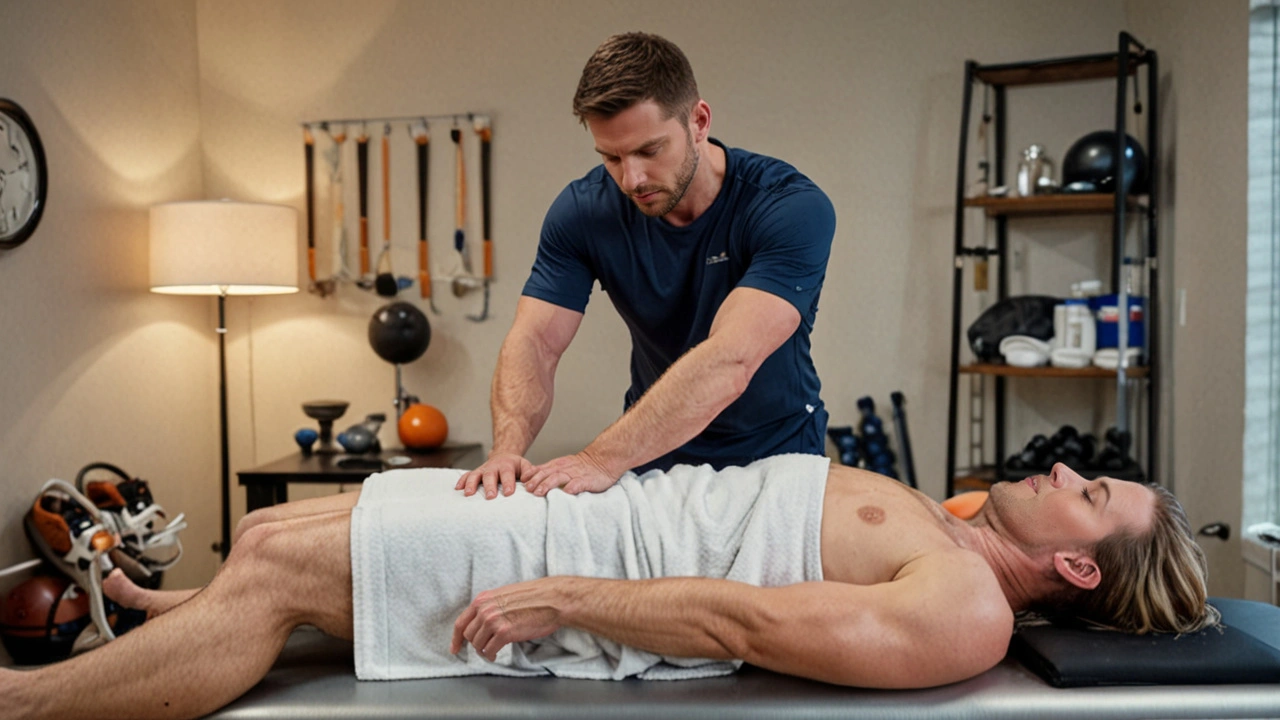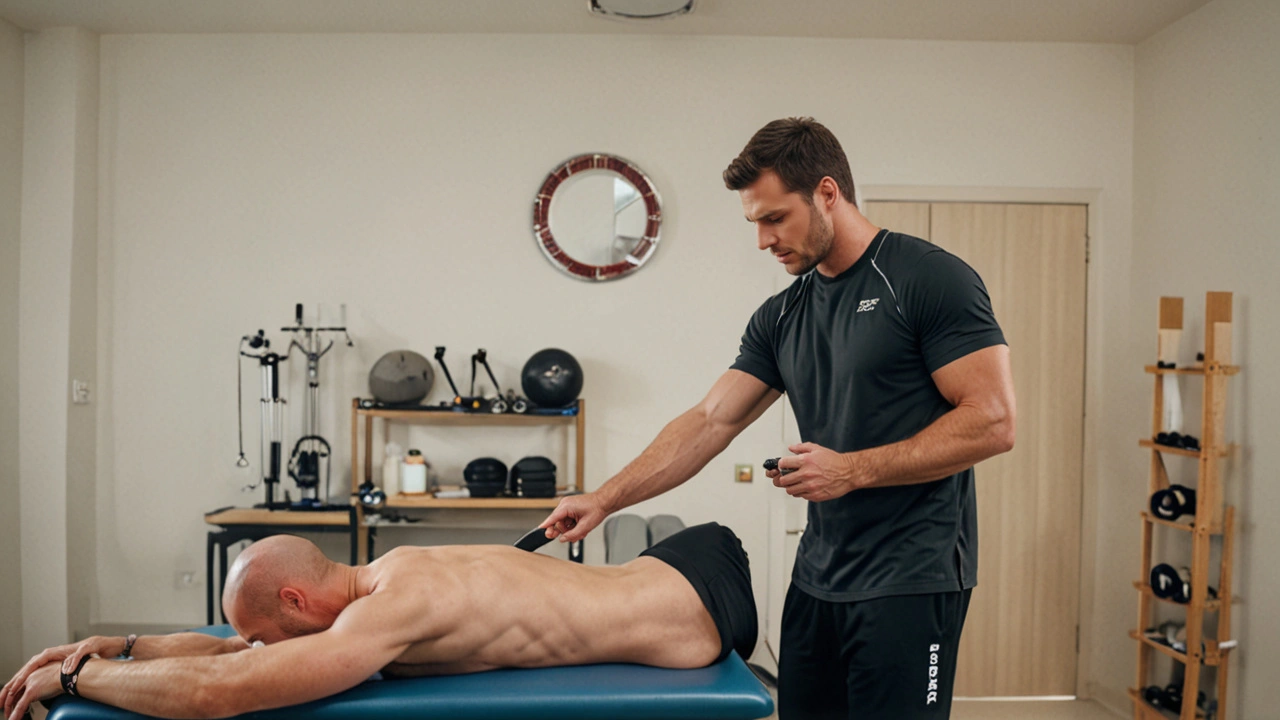
In the world of athletics, every edge counts. One often overlooked yet highly effective method of enhancing performance is sports massage. This type of massage is specifically designed for athletes, offering crucial benefits that can make a significant difference on game day.
Sports massage is not just about relaxation; it is a targeted technique used to prepare the body for the demands of physical activity. By focusing on areas of tension, improving circulation, and enhancing flexibility, sports massage ensures athletes can achieve their peak performance.
Whether you're a professional athlete or a weekend warrior, understanding the power of sports massage could be the secret weapon in your fitness arsenal. Backed by a wealth of techniques and scientific knowledge, it is a staple in many training regimes for good reason.
- What is Sports Massage?
- Benefits to Athletic Performance
- Preventing Injuries and Aiding Recovery
- Practical Tips and Techniques
What is Sports Massage?
Sports massage is a specialized form of massage therapy targeted towards athletes. Unlike a typical relaxation massage, sports massage focuses on areas of the body that are overused and stressed from repetitive and often aggressive movements. The goal is not only to relax the muscles but also to prevent injuries, improve performance, and reduce recovery time.
This therapeutic approach has been around for centuries, but its techniques have been refined to suit the modern athlete. A trained sports massage therapist will use a variety of methods, including Swedish massage, deep tissue massage, and even elements of stretching known as myofascial release. Each session is tailored to meet the specific needs of the athlete, depending on their sport and the types of stresses their body experiences.
“Sports massage is an essential part of an athlete's routine. It allows the body to recover more efficiently, improving performance and reducing the risk of injury.” – Dr. Sarah Williams, Sports Medicine Specialist
Sports massage can be categorized into four main types: pre-event, post-event, restorative, and rehabilitative. Pre-event massage prepares the body for athletic exertion by stimulating blood flow and warming up the muscles. Post-event massage aids in the reduction of muscle soreness and stiffness that often follow intense physical activity. Restorative massage is utilized during training to help recover from the strain of daily workouts. Finally, rehabilitative massage focuses on aiding recovery from injuries by promoting healing and flexibility.
One fascinating fact about sports massage is its impact on the body's physiological systems. Research indicates that regular sports massage can increase blood flow, reduce muscle tension, and even enhance immune function. A study published in the Journal of Athletic Training found that athletes who received regular sports massages experienced less muscle soreness and recovered faster than those who did not. This evidence supports the idea that sports massage is not just a luxury but a critical component of any athletic training program.
The techniques used in sports massage are designed to get into the deeper layers of muscle tissue. This includes techniques like effleurage, a stroking movement used to warm up the muscle tissue, and petrissage, which involves kneading and squeezing the muscles to release tension. Trigger point therapy is another common technique, focusing on specific tight areas within the muscle tissue that can cause pain and discomfort.
Who Can Benefit?
A common misconception is that sports massage is only for elite athletes. In reality, anyone who engages in regular physical activity can benefit. This includes everyone from weekend joggers to gym enthusiasts. Even individuals whose jobs require them to spend long hours sitting or standing can find relief through sports massage, as it helps to address the muscle imbalances that result from repetitive or static postures.
| Type of Massage | Purpose |
|---|---|
| Pre-event | Prepare the body for physical activity |
| Post-event | Reduce muscle soreness and stiffness |
| Restorative | Assist in recovery during training |
| Rehabilitative | Aid in injury recovery |
Incorporating sports massage into one's routine does not have to be complicated or expensive. Many gyms and sports facilities offer this service, and even a short session can have significant benefits. Knowing what sports massage is and how it can be used to enhance athletic performance is a powerful tool for anyone looking to improve their physical health and achieve their fitness goals.

Benefits to Athletic Performance
Sports massage can have a tremendous impact on an athlete's performance, and its benefits are widely recognized by trainers and athletes alike. By addressing specific needs of athletes, sports massage can help improve range of motion, boost circulation, and relieve muscle tension, which are crucial for peak performance during training and competition.
“The restorative advantages of sports massage can turn a good athlete into a great one,” says Dr. Christine M. Dugan, a renowned sports physiologist. “It's a staple in athletic training for injury prevention and performance enhancement.”
One of the key benefits of sports massage is the improvement in circulation, which ensures that muscles receive ample oxygen and nutrients. Good circulation also helps in the effective removal of metabolic waste, such as lactic acid, that builds up during physical exertion. This alone can reduce muscle soreness and speed up recovery times, letting athletes train harder without as long of a downtime.
Muscle flexibility is another area where sports massage shines. Rigorous training can lead to tightness and knots in muscles, reducing range of motion. By regularly incorporating targeted massage, athletes maintain and even enhance their flexibility. This not only boosts performance but also prevents injuries caused by muscle stiffness. It's a pro tip many elite athletes swear by.
For those dealing with chronic pain or niggling injuries, sports massage offers relief that traditional methods might not provide. It aids in the release of natural painkillers like endorphins, helping to manage pain more effectively. Moreover, the psychological benefits of relaxing the body can have a profound impact on an athlete's mental state, creating the right mindset for success.
Evidence is mounting to support the role of sports massage in improving athletic endurance. A comprehensive study by the American Massage Therapy Association revealed that athletes who regularly received sports massage reported a 30% increase in endurance levels after six weeks of consistent therapy sessions. This adaptation allows for longer, more effective training sessions and improves overall performance.
Besides physiological benefits, sports massage has a vital role in mental well-being. High levels of competition and stress can cause mental fatigue, and this method offers a holistic solution. By alleviating physical stress, it indirectly reduces mental stress, resulting in better focus and clearer thinking.
| Benefit | Impact |
|---|---|
| Improved Circulation | Enhances nutrient delivery and waste removal |
| Increased Flexibility | Prevents injuries and enhances range of motion |
| Pain Relief | Effective management of chronic pain and injuries |
| Mental Well-being | Reduces stress, improves focus and clarity |
| Enhanced Endurance | Increases stamina and training capacity |
Given these benefits, integrating sports massage into any athletic regimen can be game-changing. Whether you're training for a marathon, preparing for a local competition, or simply aiming to improve your personal best, the role of sports massage in maximizing athletic performance cannot be overstated. If it's not already part of your training routine, it might be time to consider adding it.

Preventing Injuries and Aiding Recovery
Preventing injuries is paramount for any athlete. The risk of injury looms large, whether you're a sprinter, a footballer, or an avid gym-goer. This is where the importance of sports massage truly shines. Regular sports massages can identify potential problem areas before they escalate. By targeting tight muscles and areas of overuse, the massage therapist can help reduce the strain on your body, making injuries less likely.
One essential aspect of sports massage is improved blood flow. When muscles are massaged, blood circulation increases, which helps flush out toxins and brings oxygen and essential nutrients to your muscle tissues. This promotes quicker healing. Notably, a study from the Journal of Athletic Training found that athletes who regularly received sports massages experienced a significant reduction in muscle soreness - a common precursor to more severe injuries.
Another critical benefit of sports massage is its ability to enhance flexibility. Tight and rigid muscles can often lead to strains and sprains. By working on muscle pliability, the massage can help ensure that your muscles can stretch and function as needed during high-intensity activities. Increased flexibility can not only enhance performance but also prevent strains and pulls.
Additionally, massages foster a connection between the athlete's mental and physical well-being. It helps in reducing stress and anxiety, which can be detrimental to recovery. The body's natural relaxation response is triggered, making it easier for muscles to recover and for the athlete to mentally reset. As renowned physiotherapist Karel Lewit once pointed out,
"A massive part of the treatment of athletic injuries is conservative and should address the prevention of problems caused by improper stretching or incorrect posture."
Massage helps in reducing inflammation. When an athlete exercises intensely, small tears occur in the muscle fibers, leading to inflammation and soreness. Massages help reduce this inflammation by gently stretching the muscle fibers and improving their elasticity. They also help reduce the production of cytokines, which are proteins that help in inflammation.
Lastly, the benefits of sports massage extend into the day-to-day life of an athlete. A well-maintained body requires fewer visits to the doctor and less downtime due to injuries. This means more time in training, more time competing, and more joy from the sport they love. It isn't just about physical well-being but fostering a holistic sense of readiness and resilience.

Practical Tips and Techniques
Integrating sports massage into your routine is easier than you might think. Here are some practical tips and techniques to help you make the most of this powerful tool. Firstly, consistency is key. Scheduling regular sports massage sessions can significantly help with muscle recovery and flexibility. Many athletes find that incorporating massages after intense training sessions or competitions leads to better performance and fewer injuries. A good starting point is to have a massage once a week or bi-weekly, depending on your training schedule and physical demands.
Secondly, understanding the different techniques used in sports massage can help tailor sessions to your specific needs. Techniques like effleurage involve long, sweeping strokes that warm up the muscles and improve blood circulation. This helps in reducing muscle stiffness and preparing the body for more intense work. Another common technique is petrissage, which includes kneading and rolling the muscles. This method is excellent for breaking down knots and relieving tension in deeper muscle layers.
Communication with your massage therapist is crucial. Don’t hesitate to discuss your specific aches, any recent injuries, or areas of concern. This allows the therapist to focus more on those spots and adjust the pressure accordingly to ensure maximum benefit. Whether you need a lighter touch to soothe or deeper pressure to target tight muscles, clear communication can make a significant difference in the effectiveness of your massage.
Incorporate self-massage techniques into your daily routine. Using foam rollers or massage balls can help maintain the benefits of professional massage sessions. Foam rolling the thighs, calves, and back can aid in releasing muscle tightness and improving flexibility. Spending just a few minutes daily on self-massage can go a long way in enhancing your overall physical wellbeing. Specific tools like massage guns are also becoming popular; they can provide deep tissue stimulation and are very handy for athletes who travel frequently.
Hydration and proper post-massage care are vital. Drinking plenty of water after a massage helps flush out toxins released from the muscles. Stretching lightly and avoiding intense exercise for a few hours post-massage can also ensure that your muscles recover well and retain the benefits of the session. Some athletes find that a combination of hot and cold therapies, like alternating hot showers and ice packs, can further enhance muscle recovery.
According to the National Institutes of Health, “Regular massage therapy helps reduce delayed onset muscle soreness and improves muscle performance,” underscoring the importance of routine massages in an athlete’s regimen.
Exploring various specialized sports massage techniques, such as those tailored for pre-event, post-event, and rehabilitation, can provide additional advantages. Pre-event massages are typically shorter and aim to prepare the muscles for activity, enhancing circulation and flexibility. Post-event massages, on the other hand, focus on reducing muscle tension and promoting relaxation. Rehabilitation massages are more targeted, often focusing on injury recovery and prevention.
In summary, the practical tips and techniques outlined here can serve as a guide to integrating sports massage into your athletic routine. By being consistent, understanding different methods, communicating effectively with your therapist, incorporating self-massage, and taking proper post-massage care, you can significantly improve your athletic performance and overall physical health. Don’t underestimate the power of a good sports massage – it might just be your secret weapon for success.





